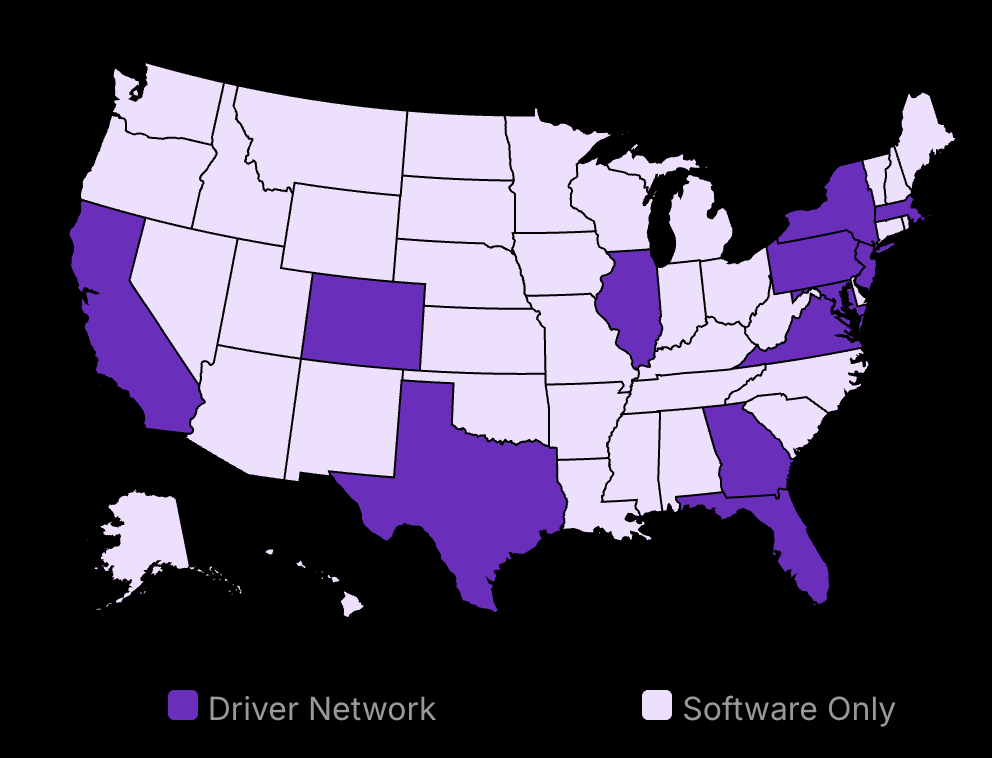The world of branding has changed completely. While many companies are still sticking to the 2023 playbook, I’ve seen smart brands adapt to 2025 by focusing on refining their brand identity and building a strong overall strategy.
What’s different now? Honestly, everything.
Consumer attention spans keep shrinking, especially among the audiences we want most. Digital noise is louder than ever, fueled by countless social media posts and marketing campaigns. AI tools that felt cutting-edge last year are now the standard for internet branding and search engine optimization. And that’s only the beginning of what a brand has to navigate today.
The results have surprised me and challenged much of what passes for “expert advice.”
Here’s what I found: The architects of a successful brand strategy in 2025 aren’t just following trends—they’re defining them based on clear brand values and core values. They’re not just collecting data—they’re building genuine relationships that foster loyalty and create loyal customers. And they’re not just selling products or services through effective product branding—they’re defining their brand purpose by addressing the customer pain points of their target customers that truly matter. A well defined purpose helps a brand exist meaningfully.
The branding strategies I’m about to share form part of a comprehensive brand strategy and aren’t theoretical; they underpin an effective brand marketing strategy and are battle-tested approaches delivering real results right now. This involves creating everything from AI-powered personalization that reflects a unique brand personality and feels genuinely human, to sustainability initiatives tied to the business purpose where values align authentically, going beyond greenwashing. These five strategies represent the new gold standard in strategic branding.
Whether you’re refreshing an established brand (perhaps through refined corporate branding efforts) or building one from scratch (even applying principles of personal branding where relevant), understanding why your brand exists is paramount. These approaches will help you cut through the noise, connect with potential customers, and engage customers in meaningful ways across your entire product line.
The difference between a strong brand that thrives and those that merely survive in 2025 often comes down to implementing a good brand strategy based on these five critical branding elements. And by the end of this guide, you’ll know exactly how to put each one to work for your business, building a unique identity. One crucial aspect that complements these strategies is understanding brand development at its core. Simplifying the process into manageable steps helps businesses focus on what truly matters, enabling smoother implementation and quicker results. For practical insights and actionable advice, explore this comprehensive post on effective brand development methods tailored for 2025 and beyond.
Ready to build a well-defined brand with a unique identity that stands out in 2025? Let’s begin.

Metrobi drivers are rated 4.97 out of 5
Trusted by local businesses for:
- Background-checked professionals
- Specialized in business deliveries
- Same drivers for consistency
- 4.97/5 average delivery rating
1. Future-Proof Branding Techniques
Stay ahead by embracing digital changes.
Use AI for better customer experiences.
Focus on sustainability to build trust.
Step 1: Understand Emerging Trends
Emerging trends dictate branding strategies today. Keeping up with these shifts is critical for maintaining relevancy. Digital transformation has fundamentally reshaped branding dynamics. The rapid pace of technological advancement demands that brands be agile to survive.
Traditional branding faces new challenges in this digital era. Customers are more powerful with information at their fingertips. As Doug Warner noted, “In the world of Internet Customer Service, it’s important to remember your competitor is only one mouse click away.” This reflects the pressures brands face to continuously innovate.
Recognizing digital transformation’s impact means observing what competitors embrace. Tracking competitor strategies provides valuable insights. This keeps your brand in the loop with industry benchmarks, avoiding lag. As Peter Drucker noted, creation shapes the future. Proactive brand management is key in predicting future trends.
Step 2: Integrate AI and Automation
AI is reshaping how brands interact with consumers. Using AI in branding means optimizing data analysis and personalizing content. This is about making substantial, data-driven decisions. Kathleen Booth emphasizes, “Agentic AI isn’t the future. It’s now. I strongly believe that the failure to adopt agentic AI solutions will put companies at a disadvantage.” This urgency underscores the importance of AI integration to remain competitive.
Automation enhances efficiency, reducing manual processes. It’s not just about cost-saving. It brings a significant impact on improving customer service. As Kirk Hartman highlights, AI now goes beyond basic interactions like “press three” systems. Conversational AI offers more personalized consumer interactions.
There are arguments for integrating AI. It increases productivity and allows customization at scale. Critics argue about its potential for job displacement and ethical issues. Businesses need to balance AI deployment with human oversight.
Step 3: Align Sustainability With Your Brand Values
Sustainability is not a passing trend. It’s now essential for brands to engage in eco-friendly practices. Paul Gassett noted, “Sustainability is no longer a nice-to-have; it’s an essential requirement.” Today, consumers prefer brands reflecting their values. Emphasizing sustainability in branding is about genuine action, not just optics.
Sustainability Consumer Preference: 62% of Gen Z consumers prefer to buy from brands that are committed to sustainability.
Brands can start by embedding values rooted in sustainable practices at their core. Highlighting these values in branding efforts builds trust and loyalty. The connection between sustainability and consumer loyalty is well-documented. Commitment to eco-friendly practices sets a brand apart from its competitors. This aids in building a strong, positive reputation.
However, some critiques point to potential greenwashing. This is about presenting unsustainable practices as eco-friendly. Brands must ensure transparency and real impact through their efforts.
This guide has equipped you with strategies to future-proof your brand in 2025 and beyond.
2. Digital Marketing Trends 2025 for Enhanced Brand Recognition
Unified experiences boost loyalty and sales.
Step 1: Leverage Social Media Innovations and Content Marketing
Social media is massive in 2025. It’s vital to catch eyes in this crowded space. Many people use multiple platforms monthly, which means you have a wide audience. Leveraging short-form video is crucial. Marketers focus on this too. They recognize its dominance. AI helps here. Crafting posts that spark conversation also works wonders. Outbound engagement, like commenting back, adds value and builds community. As Seth Godin put it, “Marketing is about the stories you tell.” Your brand success hinges on storytelling. Social commerce is another big trend. It offers a fresh way to drive sales directly through social platforms. Educate yourself further through resources like Sprout Social’s and Digital Silk’s insights on AI and social media, respectively.
Social Media User Scale: In 2025, there are estimated to be 5.42 billion total social media users worldwide.
Social Media Engagement Rates: The average engagement rate for all post types is 0.71%; 0.59% for photo posts, 1.26% for carousel posts, and 1.23% for Instagram reels.
Step 2: Invest in SEO and Voice Search
Voice search isn’t just an option. It’s vital. This trend could drive significant sales. Tailoring content for it is key. Use conversational keywords and question-oriented queries. It’s how people talk, after all. Mobile-first design is another must. Google now prioritizes mobile-friendly sites. The reason is simple: better user experience on phones is equivalent to improved search rankings. To dig deeper into these strategies, check out resources from Circle S Studio on voice search optimization and Dilligent insights on how schema markup and featured snippets improve visibility. Social search optimization becomes another area to focus on. Aim to appear where your audience organically spends time.
Global Voice Search Adoption: Around 20.5% of people worldwide use voice search.
Voice Device Usage Frequency: 65% of 25-49-year-olds speak to their voice-enabled devices at least once per day.
Step 3: Enhance E-commerce and Omnichannel Experience
Seamless integration across channels is a game changer. Businesses that adopt omnichannel strategies experience significant boosts. It’s not only about being present everywhere but providing consistent experiences. Customers seek unified interactions whether online or offline. AI further transforms e-commerce. Its role in personalization lets companies tailor shopping experiences like never before. Understanding customer journeys can lead to targeted communications that increase conversion rates. As Deloitte Digital notes, “Creating a unified experience is key to fostering deeper connections.” To develop your knowledge about AI impact in e-commerce, sources like Electro IQ provide comprehensive information about platform successes like those on TikTok.
Omnichannel Strategy Benefits: Omnichannel strategies boost customer retention by 89% and increase purchase rates by 287%.
Step 4: Prioritize Data Privacy and Ethical Practices
The reliance on data is vast, making ethical data use critical. Balanced approaches ensure trust. Consumers are increasingly wary about who holds their data and for what purpose. GDPR and similar regulations highlight the need for transparency. Compliance isn’t just about avoiding fines. It’s about maintaining a trustworthy image. Your consumers want assurance their data powers value-added experiences. Read more about this in content provided by data privacy blogs and TheeDigital for further understanding.
Data Trust Impact on Purchases: 75% of consumers said they will not purchase from organizations they don’t trust with their personal data.
Business Motivation for Data Privacy: 91.1% of businesses are willing to prioritize data privacy if they knew it would increase customer trust and loyalty.
Step 5: Focus on Hyper-Personalization
Consumers expect more than just personalized emails. Hyper-personalization delivers tailored content using real-time insights. AI-driven tools can differentiate competitors based not on what they imagine customers want but on their actual behaviors. An example is recommendation algorithms that predict needs accurately. Delve deeper into this frontier through the work by the Digital Marketing Institute that details hyper-personalization intricacies.
AI Personalization Impact: 73% of businesses agree that AI will improve personalization strategies, empowering marketers to deliver value-driven content to consumers.
Explore trusted sources like Digital Marketing Institute and AI in Social Media articles to get a full grasp. Make informed moves, not just sticking to what’s popular.
3. Innovative Brand Positioning and Defining Your Brand Personality
Strong positioning makes a brand feel essential.
Visual storytelling strengthens brand impact.
Collaborating with influencers broadens reach and credibility.
Step 1: Unique Value Proposition
A unique value proposition (UVP) is like a promise to your customers about the unique benefits they will receive. It defines your brand’s distinct edge, making it stand out. Crafting an effective UVP requires deep understanding of customer needs. It should answer their most pressing questions: “What do I gain from this brand?” and “Why this brand over others?”
John Morgan emphasizes, “Branding is not just about being seen as better than the competition. It’s about being seen as the only solution to your audience’s problem.” This means that the UVP should not only be about product features but also resonate emotionally with your customers. To achieve this, gather feedback regularly, test your messaging, and adjust based on consumer responses. Laura Busche creatively puts it, “Positioning is finding the right parking space inside the consumer’s mind and going for it before someone else takes it.”
Step 2: Engage with Visual Storytelling to Share Your Brand Story
Visual storytelling is the art of using visual media to communicate your brand message and values. It goes beyond mere aesthetics. It captures and holds consumer attention by connecting on a deeper level. Therefore, visual elements like videos, infographics, and branded content can significantly enhance recall and engagement.
The Movavi Blog suggests that images communicate faster than words. Utilize this by integrating visuals consistently with your brand story. Story is an ancient human connection tool, making it invaluable in brand positioning. It taps into emotions, creating lasting loyalty. Books like “Brand Storytelling” by Kyle Cleary provide a deeper dive into crafting compelling narratives.
Step 3: Collaborate with Influencers and Potential Co-Branding
Aligning with influencers whose values match your brand can be a powerful strategy. This partnership can boost brand visibility and credibility among new audience segments. Influencers can bridge the gap between your brand and potential customers. These partnerships should naturally integrate into both parties’ content. Authenticity is key.
Perceived Effectiveness of Influencer Marketing: 84% of brands believe influencer marketing is effective.
Influencer Marketing ROI: Brands get $4.12 for every $1 spent on influencer campaigns on Instagram.
The Upfluence Blog states that strong alignment creates room for long-term collaborations. This sustained relationship builds deeper audience trust. Choosing the right influencer means going beyond their follower count; it’s about shared values. Look for influencers who have genuine connections with your target demographic. Hashfame highlights this: “Well-aligned collaborations maintain audience trust and credibility.”
Related Insights: The 5 C’s for Consistent Branding
The 5 C’s of branding provide a framework to ensure comprehensive brand management:
Clarity: Your brand message should be simple and easy to understand.
Consistency: Deliver the same quality and messaging across all platforms.
Credibility: Build trust through authentic practices.
Connection: Engage emotionally with consumers.
Commitment: Show customer dedication in every brand interaction.
Each “C” demands continuous attention to maintain a strong brand presence. Authors like David Aaker in “Building Strong Brands” offer more in-depth exploration of these principles for those eager to learn more.
Consistent Branding Revenue Impact: 68% of companies reported that consistent branding contributed 10-20% to revenue growth.
Integrating these strategies establishes a brand that doesn’t just meet today’s needs but anticipates tomorrow’s opportunities. It’s not enough to have a great product or service. Understanding positioning enables brands to be front-runners in a crowded marketplace.
4. Consumer Engagement Strategies
Increase consumer retention with exclusive community involvement.
Drive interaction through creative, participatory campaigns.
Adapt fast with real-time consumer insights.
Step 1: Build Community and Loyalty
Building a community around your brand is not just about selling products. It’s about creating a space where consumers feel valued and can connect with others who share their interests. Start by developing exclusive communities where members can interact, share feedback, and feel a sense of belonging. Platforms like Facebook Groups or dedicated forums can facilitate these interactions. Make the community a space for genuine dialogue, not just brand promotion.
Loyalty programs are key to keeping customers engaged and encouraging repeat business. Design your loyalty program to offer personalized rewards based on consumer preferences and behaviors. For example, offer special discounts, birthday gifts, or early access to new products. Engage with a quote from Valeria Maltoni: “The way to a customer’s heart is much more than a loyalty program. Making customer evangelists is about creating experiences worth talking about.”
Generational Brand Loyalty: 73% of Millennials are loyal to their preferred brands, the highest of any generation.
Key Actions for Loyalty and Community
Choose the Right Platform: Identify where your customers are most active, such as social media or forums.
Encourage Participation: Use polls, Q&A sessions, or feedback threads to foster engagement.
Personalize Rewards: Tailor your loyalty program to cater to diverse customer needs.
Step 2: Implement Interactive Campaigns
Interactive campaigns are powerful tools for boosting consumer participation. Design campaigns that encourage active participation, such as challenges or user-generated content. For instance, ask consumers to share photos or videos using your products with a specific hashtag. This not only engages your audience but also amplifies your brand’s reach.
Gamification—adding game elements to non-game contexts—can enhance these campaigns. Introduce elements like point systems, leaderboards, or missions to motivate users. For example, users could earn points for each purchase, which can be redeemed for further rewards. According to a source, gamified experiences significantly boost engagement by encouraging participation and competition. Reflect upon a thought: “Gamification catalyzes increased user participation and engagement, transforming passive consumers into active participants in brand experiences.”
Setting Up Interactive Campaigns
Define Campaign Goals: Understand what you want to achieve—brand awareness, increased sales, or customer data collection.
Create Clear Instructions: Ensure participants know how to join and what’s expected of them.
Use Engaging Formats: Utilize formats like quizzes, polls, or contests on stories and reels for instant engagement.
Step 3: Utilize Real-Time Feedback
Real-time feedback is crucial for staying aligned with customer expectations. Establish feedback loops where customers can voice their thoughts immediately after interactions. This could be through direct messages, emails, or surveys post-purchase.
Real-time tools such as AI-driven chatbots can be leveraged to address queries on the spot. These tools not only resolve issues quickly but also gather data on customer sentiment and preferences. A relevant insight highlights that real-time feedback captures genuine reactions swiftly. “Real-time feedback captures your users’ genuine reactions before time can blur the edges of their experience.”
Customer Service Speed Expectation: 72% of customers want immediate service.
Optimizing Feedback Integration
Integrate Real-Time Tools: Use chatbots or live chat for instant communication.
Analyze Feedback Data: Regularly review feedback to identify patterns or recurring issues.
Adapt Quickly: Make necessary changes to products or services based on feedback to directly reflect customer desires.
5. Advanced Tips for Enhanced Branding
Tap into less-expected channels for brand freshness.
Refresh brand aspects regularly to stay dynamic.
Ensure brand promise and actions align.
Additional advice or alternative methods
Explore unconventional branding channels for a fresh perspective
Non-traditional channels offer new ways to connect. Platforms like TikTok for B2B, Reddit, and Clubhouse innovate audience reach and niche engagement. These platforms can introduce your brand to communities often untouched by mainstream approaches. Consider, for example, how Emerging Platforms have been pivotal in creating unexpected yet effective branding outcomes.
These numbers highlight the importance of leveraging these spaces. Bold, creative campaigns such as Coca-Cola’s Bubble Billboard or Red Bull’s Stratos Space Jump exemplify how brands achieve buzz and engagement through guerrilla tactics.
To dive deeper, consider reading books like “Contagious: How to Build Word of Mouth in the Digital Age” by Jonah Berger. It provides insights into creating impactful campaigns by understanding consumer psychology and leveraging uncommon avenues.
Consistently Refresh Brand Identity and Image to Remain Dynamic
Staying relevant means evolving. A brand refresh goes beyond updating a logo. It involves rethinking messaging and positioning to stay competitive. This keeps your brand aligned with current consumer expectations. Hence, consistently refreshing your visual elements and storytelling approach could significantly uplift consumer perception.
Rebranding Frequency Among Large Companies: 74% of the S&P 100 companies have rebranded within their first seven years of operation.
Innovating brand image doesn’t stop at visuals. When planning a refresh, the role of real-time analytics and social listening becomes crucial. These tools help track performance and allow for tweaks as needed. Leaders in the field like Apple’s continuous refinement of their brand promise show how staying current isn’t an option; it’s a necessity. Books such as “Building Strong Brands” by David Aaker provide further insights into revitalizing brand identity while retaining core values.
Common Pitfalls and How to Avoid Them
Avoid misalignment between brand promise and delivery
Misalignment breeds mistrust. To build and maintain consumer trust, it’s crucial to fulfill the promises your brand makes. Trust is a cornerstone of brand loyalty. Misalignment can happen easily when the marketing message isn’t backed by actual customer experience, which can be fatal in terms of brand reputation.
Evaluating your processes involves ensuring every customer touchpoint—be it online or in-store—matches your promises. Frequent reviews and training can ensure alignment from the inside out. By understanding the significance of consistent customer experience, you’re able to mitigate risks associated with broken promises. For a structured approach to aligning brand promises with delivery, “Delivering Happiness” by Tony Hsieh offers organizational insights you might find useful.
Steer clear of neglecting the existing customer base when seeking new demographics
Your existing customers are your strongest advocates. Yet, while attempting to capture new markets, some brands lose sight of their loyal base. This can lead to decreased retention rates. Instead, balance is essential. When acquiring new demographics, ensure existing ones feel valued and nurtured.
Retention strategies could include personalized communication, loyalty programs, and exclusive offers. Engaging your existing base through familiar influencers can bolster their trust and encourage repeat business.
Recommended reading includes “The Loyalty Leap” by Bryan Pearson, focusing on maximizing existing customer relationships. This text hones in on fostering lasting loyalty in an age where new always seems better. Leveraging strategies from such literature ensures you don’t just expand, but also nurture what’s already yours.
By weaving together these advanced strategies in brand enhancement, you not only create a compelling brand image but establish a framework that maximizes growth and loyalty.
Troubleshooting Common Issues
Fix brand image problems with tailored rebranding.
Keep customers happy with open and honest communication.
Solutions to Potential Problems
When dealing with common issues in branding, it’s important to have clear plans. Improving brand perception and tackling customer dissatisfaction are two major areas to focus on.
Address Brand Perception Issues Through Rebranding Initiatives
Evaluate Current Brand Perception: Start by checking how people see your brand. Use surveys, social media analysis, and customer feedback to figure this out. Look for any patterns or recurring themes in the feedback. For instance, search for common complaints or positive mentions to get a realistic picture.
Identify Core Issues: Once you know the current perception, point out specific problems. Find out why customers might have negative views. Is it outdated imagery, inconsistent messaging, or perhaps negative publicity? Write down all such issues in detail.
Create a Rebranding Plan: Develop a plan focusing on addressing each core issue. This plan should include new messaging, updated visuals, and potentially a new logo. Discuss with a branding expert if needed. They can provide insights into what works in the market.
Test Changes Internally: Before launching changes, test them within your company. Use internal surveys to see if employees believe the new brand direction solves the identified issues. If concerns arise, refine the plan.
Launch and Announce Rebranding: Roll out the changes. A well-crafted press release and strategic social media announcements help. Include visuals like before-and-after imagery to highlight changes.
Monitor Initial Reception and Feedback: After launching, pay close attention to the feedback. Use social media platforms and direct customer communication channels to understand initial reactions. Be ready to make adjustments based on this feedback.
Resolve Customer Dissatisfaction with Transparent Communication
Acknowledge and Address Complaints: Begin by promptly acknowledging any specific complaints from customers. Use direct channels like email or dedicated customer service phone lines. Personalize the messages where possible to make customers feel valued.
Analyze Feedback Data: Collect and assess customer feedback through surveys or direct communication. It’s crucial to note frequently mentioned issues which impact customer satisfaction. For example, if delays are a recurring problem, this should be a priority area for improvement.
Implement Responsive Communication Strategies: Develop a strategy for effectively handling and responding to customer concerns. Train customer service teams to be empathetic and solution-oriented. Encourage them to follow up on every interaction to ensure customer satisfaction.
Maintain Open Channels: Keep your communication lines open. This means having active support on social media platforms, customer service portals, and in-person channels. Regular updates on solutions to the issues they raised will help build trust.
Evaluate and Improve: Finally, regularly assess the effectiveness of communication strategies. Seek feedback from customers and adjust as necessary to ensure satisfaction. Addressing dissatisfaction isn’t a one-time effort—it requires ongoing dedication.
Both rebranding and transparent communication require ongoing effort and assessment. Address these issues proactively to enhance brand reputation and customer satisfaction.
Further Resources and Reading
Get expert-led branding insights and useful case studies.
Highlight the importance of branding for brand trust and loyalty.
Push understanding of branding’s role in business growth.
Related topics or advanced guides
For those interested in deeper dives into branding strategies through expert perspectives, interviews with seasoned professionals in the field can be very enlightening. These interviews often uncover the decision-making processes and strategic pivots leaders have used. They are especially valuable when navigating less clear-cut challenges in branding.
Real-world applications can also be revealed through successful case studies. These documents provide valuable lessons on how to measure branding impact and apply strategies in diverse environments. They help professionals understand the nuts and bolts of execution.
Why This Skill Task Matters
In the business landscape, branding doesn’t just affect customer perceptions; it fundamentally influences business growth. Clear branding helps articulate what a company stands for, setting the foundation for marketing strategies and communications. Without this clarity, companies risk being seen as commodities.
Brand Growth: The Harvard Business Review indicates that strong brands are correlated with achieving market leadership.
Consumer Trust and Loyalty: As Scott Cook, Co-founder of Intuit, noted, a brand is defined by customer perceptions. Brands that consistently meet expectations build deeper trust over time.
Understanding branding is akin to understanding reputation management. Both strive to control how the public and stakeholders perceive a company. This knowledge is paramount in establishing long-term business credibility.
The art of marketing is brand building. Without a strong brand, market differentiation hinges solely on price competitiveness said Philip Kotler. This wisdom underscores the risks faced by businesses that neglect branding’s pivotal role.
Conclusion
As we look ahead to 2025, effective branding efforts aren’t just about following trends—it’s about creating them. The five strategies outlined in this guide provide a solid foundation for brand development for businesses ready to adapt and achieve revenue growth in a rapidly changing landscape. From AI-powered personalization to sustainability initiatives, from voice search optimization to community building, each approach offers a clear path to a strong brand identity and recognition, potentially attracting positive media attention.
Remember that successful marketing and branding success stem from consistent branding and authenticity. Your defined brand voice and brand messaging must deliver on promises across all channels, ensuring your values align with your audience who may share the same values, maintaining a genuine connection. The most effective and popular brands of 2025 will be those that balance innovation with reliability, building instant credibility.
Start small by implementing one strategy at a time. Perhaps begin with enhancing your digital presence through content marketing, refining your mission statement, focusing first on a specific product branding strategy, exploring co branding opportunities, refining individual branding for key personnel, or another type of branding relevant to your goals. Establish clear brand guidelines for all marketing materials.
Track your results, including revenue growth, learn from setbacks, refine marketing materials, and build on your successes. The key elements of a flexible strategy allow for adaptation.
The brands that thrive in 2025 won’t necessarily be the largest or the loudest—they’ll be the ones that understand their target market deeply, encourage customers to engage, foster loyalty, and adapt to serve new customers and retain the same customers better. With a clear visual identity (including thoughtful brand colors and overall color scheme), defined brand guidelines, and authentic execution, your brand has the potential to be among them. The time to prepare is now.



























